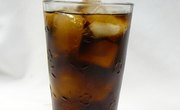
Cereal manufacturers continually refine methods of keeping the crunch in breakfast cereals. There’s just something about feeling the texture, and hearing the crunch, that helps us start off the day on the right foot. Controlling the moisture in the finished cereal makes or breaks the quality of the cereal. Crunchiness is reduced when the moisture content exceeds 3 percent. Cereal containing a moisture content less than 1 percent breaks apart. For this science project you need a kitchen scale; a 2-qt. container; five brands of corn flakes; 15 gallon-size, reclosable, plastic bags; a fine-tip, permanent, black marker; 2-cup measure; wire colander; and a timer.
Place the 2-qt. container on the kitchen scale. Calibrate the scale by setting the scale to “0.”
Label three bags for each brand of cereal. Weigh 4 oz. of the appropriate cereal in the 2-qt. container on the scale. Pour the cereal into the correctly labeled bag and seal it. Continue until all 15 bags are used.
Put 2 cups of water into one bag of cereal. Set the timer to ring in three minutes. Place the 2-qt. container under the wire colander. Invert the bag of cereal over the colander, and drain the water into the container. Set the timer for two minutes.
Pour the water in the 2-qt. container into the measuring cup. Record the amount. This is the liquid not absorbed by the cereal. Rinse the measuring cup, colander and 2-qt. container. Repeat steps 3 and 4 until all the bags of cereal are used.
Average the three readings for each brand of cereal. The brand with the highest average is the cereal that stays crunchy the longest.
Compile a chart with the results of each trial for each brand of cereal and the average for each brand expressed as a decimal.
Display the data from the chart in the form of a bar graph, with the brands on the x-axis and the amount of liquid on the y-axis.
Try the experiment again, using milk, or trying other types of cereal, such as oat cereal “O’s” or shredded wheat squares. See if sugar-coated cereals give the same results as their plain counterparts or if the percentage of fat in the milk makes a difference.
Consider real-life applications of the data. Many cereals claim to stay crunchy in milk. Is it true? Could manufacturers use results of experiments like these to improve their product?
References
About the Author
Annette Strauch has been a writer for more than 30 years. She has been a radio news journalist and announcer, movie reviewer for Family Movie Reviews Online, chiropractic assistant and medical writer. Strauch holds a Master of Arts in speech/broadcast journalism from Bob Jones University, where she also served on the faculty of the radio/TV department.
Photo Credits
Stockbyte/Stockbyte/Getty Images
